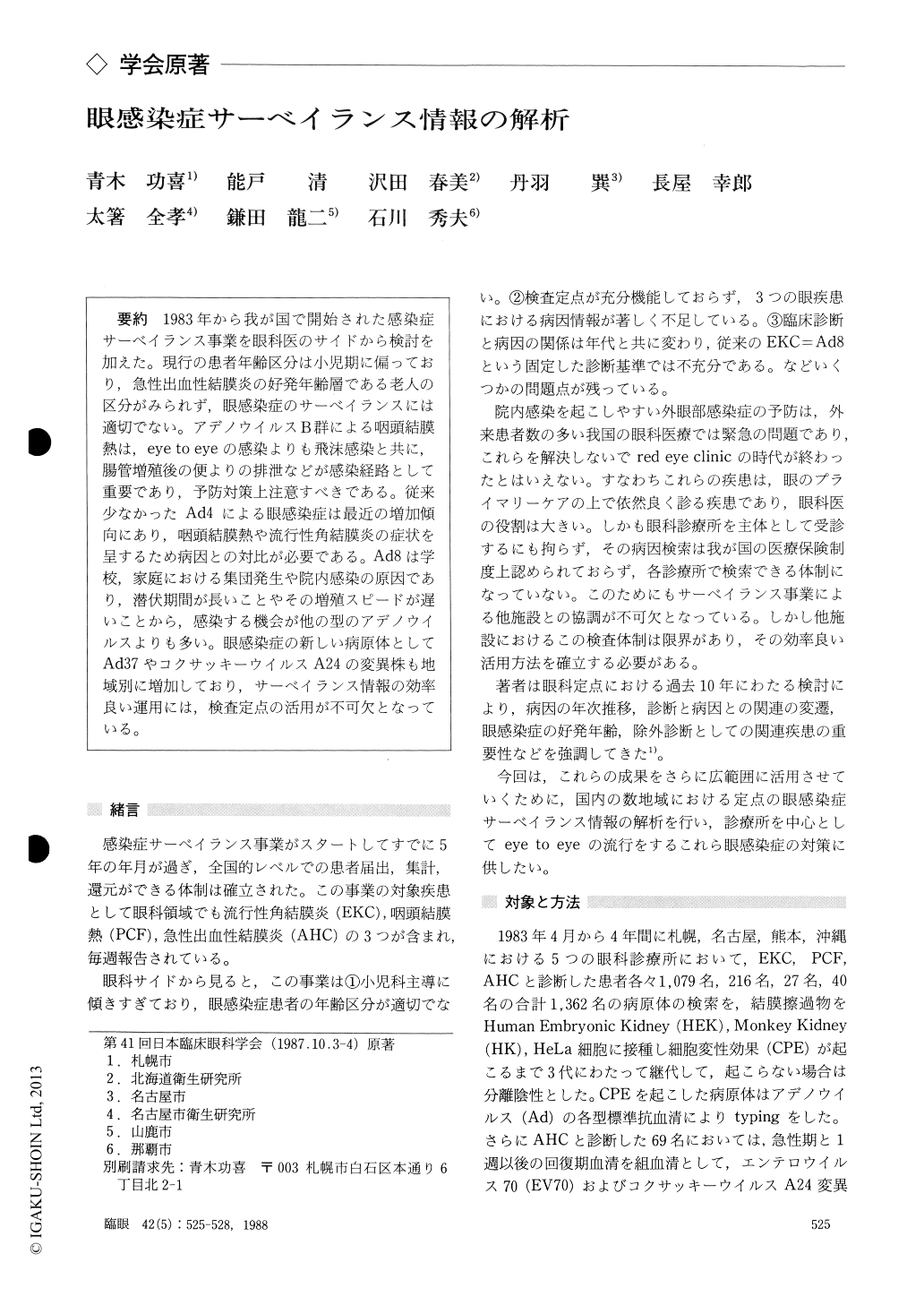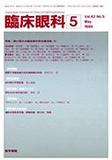Japanese
English
- 有料閲覧
- Abstract 文献概要
- 1ページ目 Look Inside
1983年から我が国で開始された感染症サーベイランス事業を眼科医のサイドから検討を加えた.現行の患者年齢区分は小児期に偏っており,急性出血性結膜炎の好発年齢層である老人の区分がみられず,眼感染症のサーベイランスには適切でない.アデノウイルスB群による咽頭結膜熱は,eye to eyeの感染よりも飛沫感染と共に,腸管増殖後の便よりの排泄などが感染経路として重要であり,予防対策上注意すべきである.従来少なかったAd4による眼感染症は最近の増加傾向にあり,咽頭結膜熱や流行性角結膜炎の症状を呈するため病因との対比が必要である.Ad8は学校,家庭における集団発生や院内感染の原因であり,潜伏期間が長いことやその増殖スピードが遅いことから,感染する機会が他の型のアデノウイルスよりも多い.眼感染症の新しい病原体としてAd37やコクサッキーウイルスA24の変異株も地域別に増加しており,サーベイランス情報の効率良い運用には,検査定点の活用が不可欠となっている.
Within the framework of surveillance system of infectious diseases instituted in 1983 in Japan, we conducted an epidemiological study of ocular infec-tious diseases in five ophthalmological clinics in different districts of Japan over a 4-year period through 1987. We evaluated a total of 1,362 cases diagnosed as epidemic keratoconjunctivitis (EKC), pharyngoconjunctival fever (PCF) or acute hemor-rhagic conjunctivitis (AHC). In all the cases, an attempt was made to isolate the responsible viralorganisms and to identify the type of the adenovirus.The major pathogens included adenovirus types 3, 4, 8, 11, 19, 37, EV70 and CA24 variant. For the prevention of adenovirus type 3, due attention seemed to be necessary to the transmission routes by filth of infected infants even after the disappear-ance of symptoms. Adenovirus type 8 ranked as a major cause of hospital infection in summer because of longer incubation period and slow growth of the agent. In all the cases of adenovirus type 3, the genome type was either Ad3f or Ad3g. The findings indicate that the current surveil-lance program needs major modification as it is mainly concerned with pediatric infectious diseases with biased age grouping in its classification.
Rinsho Ganka (Jpn J Clin Ophthalmol) 42(5) : 525-528, 1988

Copyright © 1988, Igaku-Shoin Ltd. All rights reserved.


